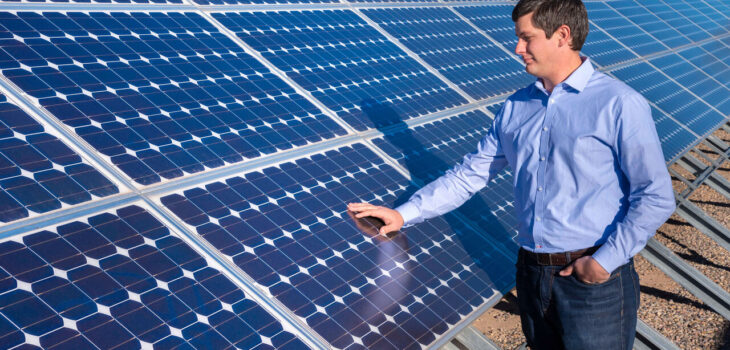 Technology
Technology
The Financial Impact of Switching to Solar Energy in Australia
- by Freya Parker
Imagine slashing your energy bills, reducing your carbon footprint, and increasing your property’s value—all by making a simple switch to solar energy. Sounds too good to be true? Well, it’s not! With the rising cost of electricity in Victoria, Australia, more homeowners and businesses are turning to solar power as a cost-effective and sustainable solution. But what does the financial impact of switching to solar truly look like?
In this comprehensive guide, we’ll break down the costs, savings, incentives, and overall return on investment of installing solar panels in Victoria. Whether you’re new to solar energy or considering an upgrade, this article will provide the insights you need to make an informed decision.
1. Understanding the Cost of Solar Panels
Upfront Costs
The initial cost of installing a solar system depends on the size, quality, and brand of the panels. On average, a 6.6kW solar system in Victoria costs between $5,500 and $8,000 after government rebates (Solar Victoria).
Cost Breakdown
- Solar panels: 60% of the total cost
- Inverter: 15% of the total cost
- Installation & labor: 15% of the total cost
- Other accessories (wiring, batteries, etc.): 10% of the total cost
While the initial investment may seem high, government incentives and rebates help reduce these costs significantly.
2. Government Incentives and Rebates
Victorian Solar Panel Rebate
Eligible homeowners in Victoria can receive a rebate of up to $1,400 on solar panel installations through the Solar Homes Program (Solar Victoria).
Interest-Free Loans
In addition to rebates, the Victorian government also offers interest-free loans of up to $1,400, allowing homeowners to split the cost into manageable payments.
Small-Scale Technology Certificates (STCs)
STCs act as a discount on your system purchase and can reduce the cost of installation by $2,000 to $3,000, depending on the system size.
3. Savings on Energy Bills
One of the biggest financial benefits of solar energy is the reduction in electricity bills. The average household in Victoria uses 15-20 kWh per day. A 6.6kW system can generate around 26kWh per day, meaning homeowners can drastically cut their reliance on grid electricity.
Estimated Annual Savings
- Without solar: $2,500 per year (based on an average electricity bill in Victoria)
- With solar: $300-$600 per year (after switching to solar power)
- Total savings: Up to $2,200 annually!
4. Best Solar Feed-in Tariff in Victoria
If you generate excess solar energy, you can sell it back to the grid through a solar feed-in tariff (FiT).
Best Feed-in Tariff Providers in Victoria
- Origin Energy offers competitive solar feed-in tariffs for homeowners, making it a preferred choice for Victorians.
- Other notable providers include AGL, Red Energy, and Energy Australia.
Tip: Always compare providers to get the best solar feed in tariff VIC that suits your needs.
5. Return on Investment (ROI) for Solar Energy
ROI Calculation
With an upfront cost of around $6,500 and annual savings of $2,200, most homeowners in Victoria can achieve a full return on investment in 3-5 years.
Increased Property Value
Houses with solar panels sell 20% faster and for 4% more than those without, making it a valuable asset.
6. Environmental Benefits and Long-Term Impact
- Reduces carbon footprint: A typical home solar system offsets 4 tonnes of CO2 annually.
- Supports renewable energy: Less reliance on fossil fuels contributes to a sustainable future.
- Battery storage for backup power: Solar batteries like the Tesla Powerwall store excess energy for nighttime use.
Conclusion
Switching to solar energy in Victoria is not just an eco-friendly choice—it’s a financially smart decision. With government rebates, best solar feed-in tariffs in VIC, and increasing electricity prices, now is the perfect time to go solar.
Key Takeaways
- Government rebates make solar affordable.
- Save thousands annually on energy bills.
- The best solar feed-in tariff in VIC boosts financial returns.
- Solar increases property value.
If you’re considering making the switch, start by comparing quotes from trusted providers like Origin Energy to get the best deal.
FAQs
1. How much does it cost to install solar panels in Victoria?
On average, between $5,500 and $8,000 after government rebates.
2. What is the best solar feed-in tariff in VIC?
Origin Energy and other providers offer competitive rates; it’s best to compare for the best deal.
3. How much can I save on electricity bills with solar?
Savings can reach up to $2,200 per year, depending on usage and system size.
4. Is solar energy worth it in Victoria?
Yes, with rebates, savings, and increased property value, solar offers great financial benefits.
5. How long does it take to recover the cost of a solar system?
Typically, 3-5 years based on energy savings and feed-in tariffs.









